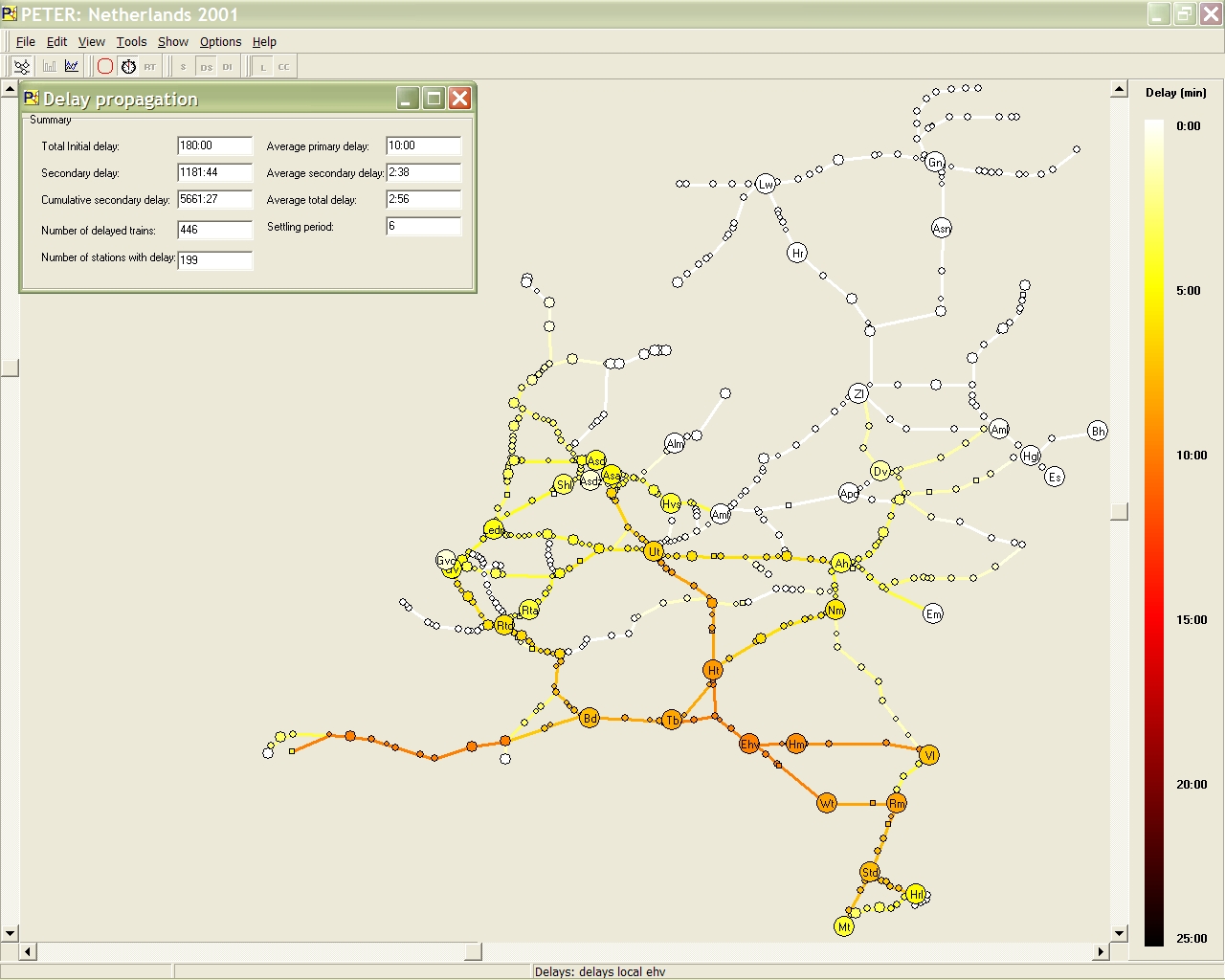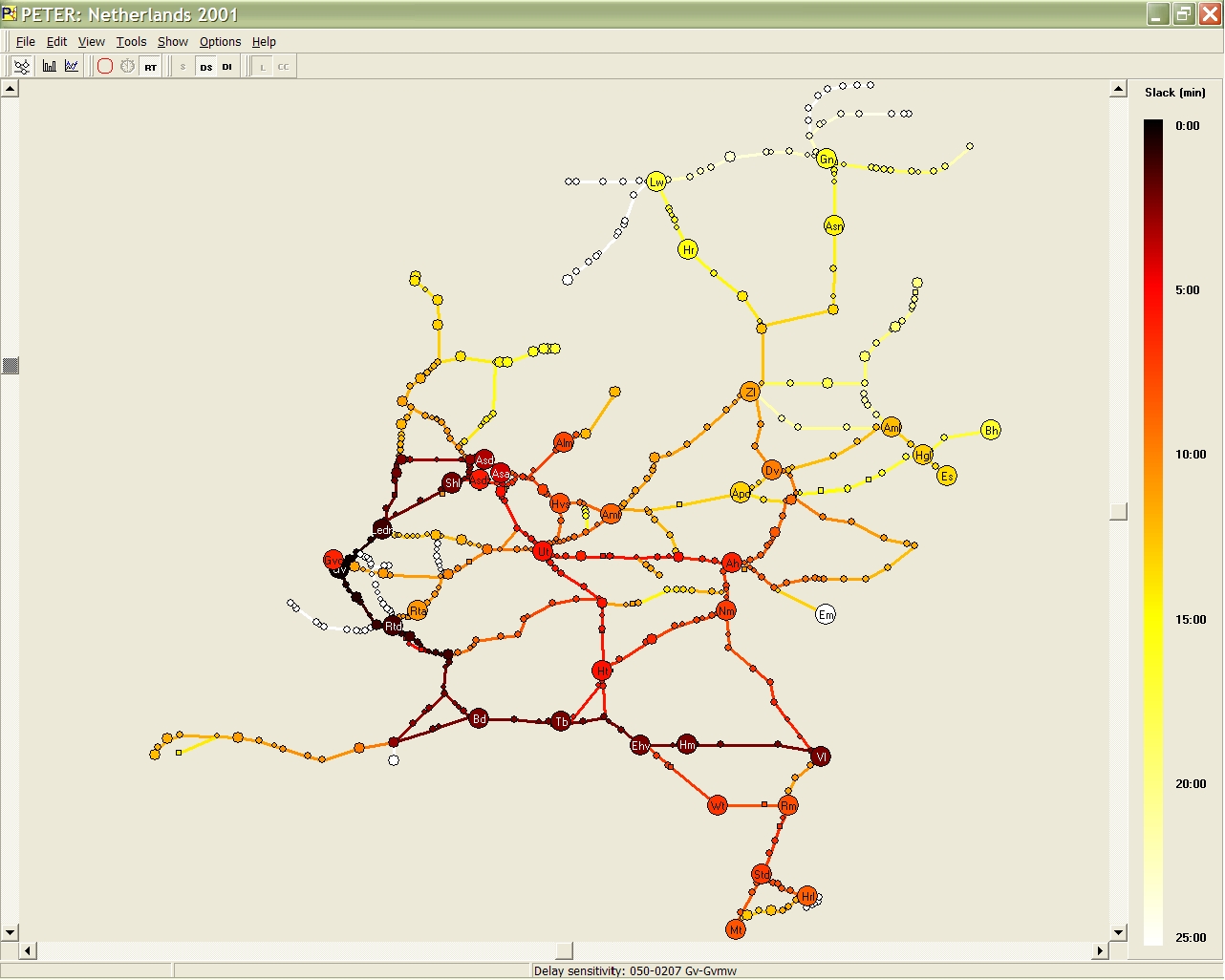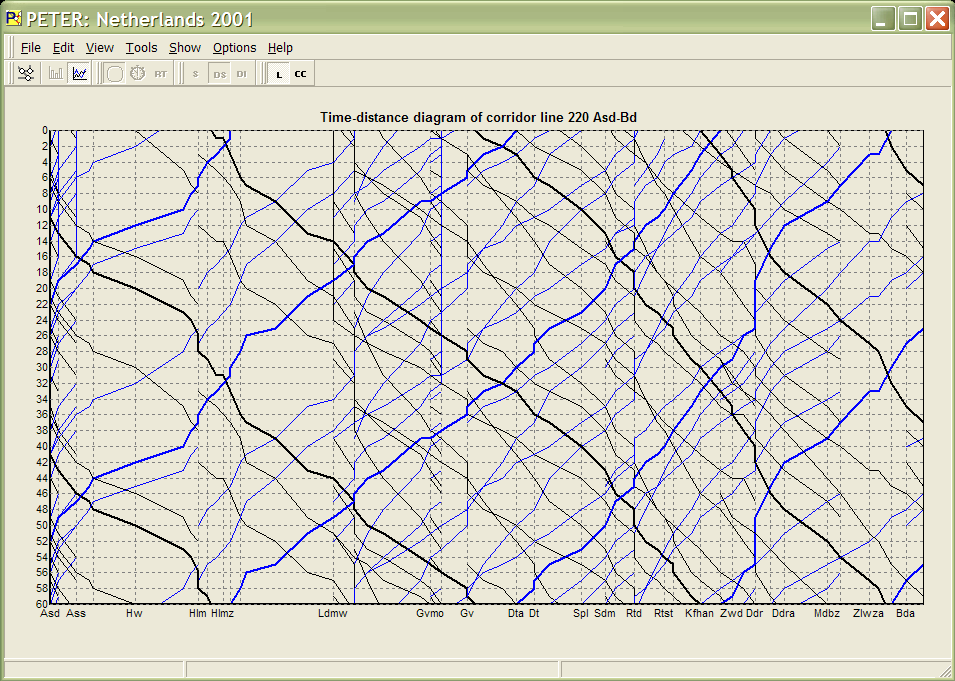PETER
PETER is a network stability anaysis tool for periodic railway timetables based on max-plus algebra. PETER is an acronym for Performance Evaluation of Timed Events in Railways.
PETER computes and visualizes basic network properties of railway timetables. In particular PETER offers the following functionalities:
- Stability analysis: identification, quantification and visualization of the critical ciircuits with minimal time allowances in the network, including the decoupling of the network into independent subnetworks.
- Recovery analysis: identification, quantification and visualization of the critical recovery times (time allowances) between any pair of train events, including delay impact and delay sensitivity.
- Delay propagation: identification, quantification and visualization of the propagation of initial delay scenarios over time and space.
PETER models railway timetables as a macroscopic max-plus linear system based on timed precedence relations between events. Events are arrivals, departures and non-stop passages at timetable points.The activities between the events correspond to train running times, dwell times, transfer times, turn-around times, and minimum headway times. These events and activities provide a network topology as well as the dynamic system behaviour of train delays over the network associated with Petri Nets and in particular Timed Event Graphs. The nonlinear recursive equations can be formulation as a linear dynamic system in max-plus algebra. Efficient algorithms based on max-plus algebra theory and graph theory have been implemented providing fast calculations for large-scale networks, taking typically split seconds. In particular, PETER implements the max-plus policy iteration algorithm for spectral analysis, critical path algorithms for recovery times, and a dedicated delay propagation algorithm based on the polynomial max-plus state-space representation. Moreover, the software uses sparse polynomial matrix representations for efficient memory requirements of large-scale (national) networks.
Networks can be created using the built-in editors or imported from ASCII input files in a generic format. After reading the input data, PETER automatically constructs the max-plus model and draws the network view. A built-in editor can be used to edit the data. After editing a feasibility check follows and a new max-plus model is constructed. Edited or manually inserted networks in PETER are also saved in the generic format. A special import utility has been implemented such that PETER supports import files from DONS, the timetable design tool of the Dutch Railways (NS) and ProRail.
People involved
Publications
- R.M.P. Goverde (2014). Timetable stability analysis. In: I.A. Hansen, J. Pachl (Eds.), Railway Timetabling and Operations: Analysis, Modelling, Optimisation, Simulation, Performance Evaluation, 2nd Edition, pp. 133-153, Eurailpress, Hamburg.
- R.M.P. Goverde, B. Heidergott, G. Merlet (2011). A coupling approach to estimating the Lyapunov exponent of stochastic max-plus linear systems. European Journal of Operational Research, 210(2), 249-257.
- Goverde, R.M.P. (2010). A delay propagation algorithm for large-scale railway traffic networks. Transportation Research Part C: Emerging Technologies, 18(3), 269-287.
- R.M.P. Goverde (2007). Railway timetable stability analysis using max-plus system theory. Transportation Research Part B: Methodological, 41(2), 179-201.
- R.M.P. Goverde (2005). Punctuality of Railway Operations and Timetable Stability Analysis. PhD Thesis, TRAIL Thesis Series no. T2005/10, Delft University of Technology, Delft.
- R.M.P., Goverde, M.A. Odijk (2002). Performance evaluation of network timetables using PETER. WIT Transactions on The Built Environment, 61, 731-740.





